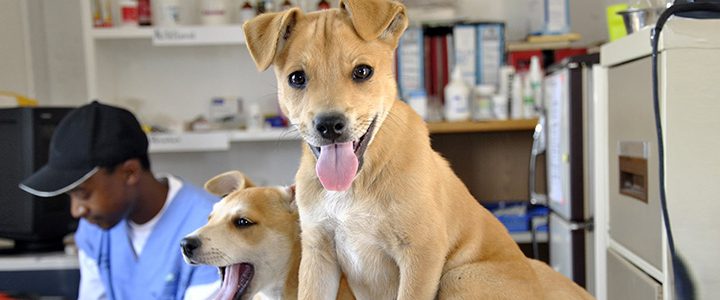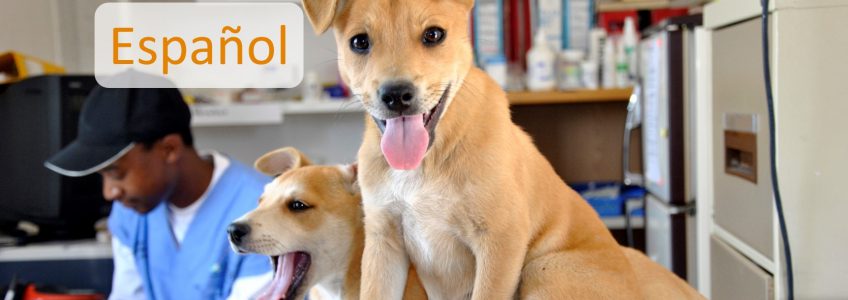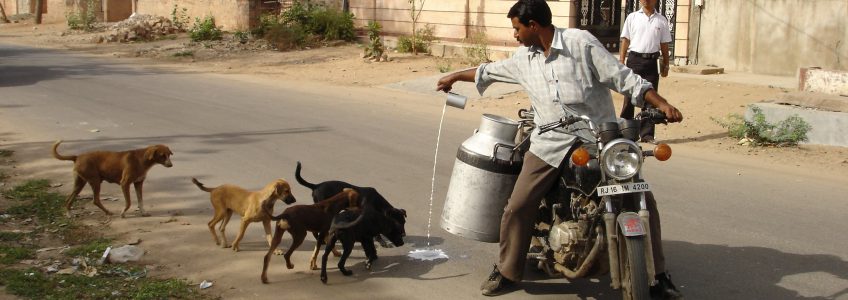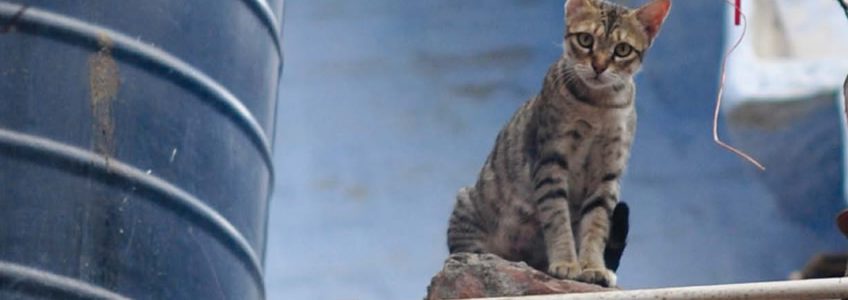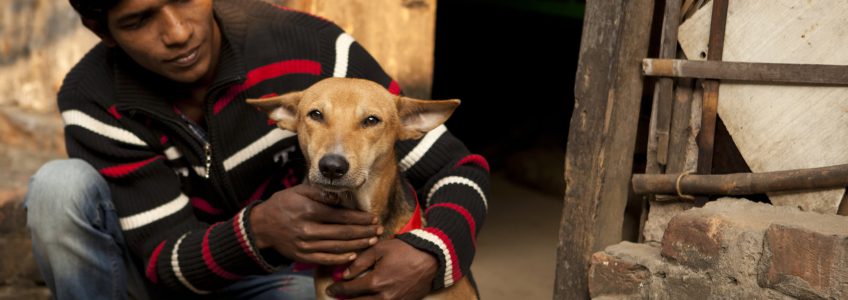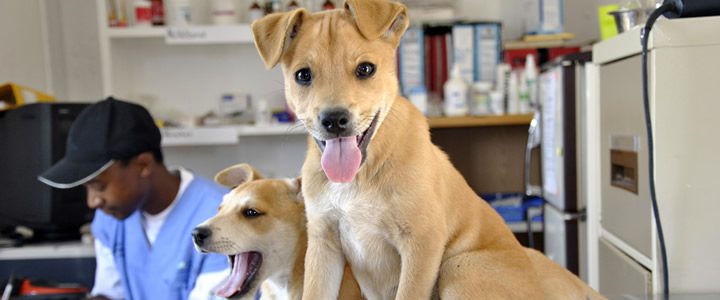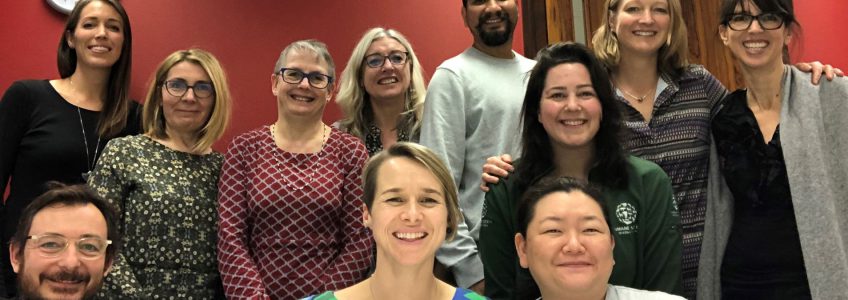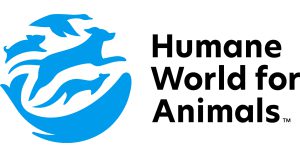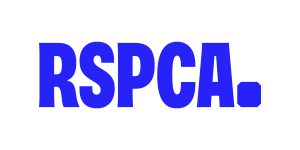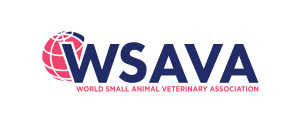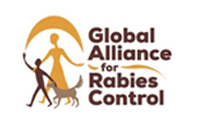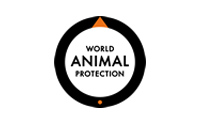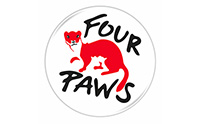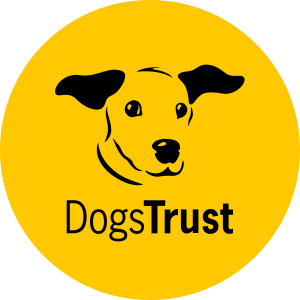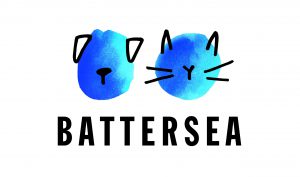When risks outweigh benefits: the case for not testing companion animals for SARS-CoV-2
The chance of an owner infecting their pet dog or cat is very low, however it is possible. Hence we predict that as cases of COVID-19 in people continue to occur, so the cases of companion animals will also continue to appear. These animal cases may be inevitable, but they are no cause for additional concern. These are cases of people infecting their pets, there is no evidence that dogs or cats play a role in subsequent transmission to people.
As testing for SARS-CoV-2 in animals becomes possible in more countries¹, we make a plea to the veterinary community to limit their use. Positive test results have no impact on how vets treat symptoms as there are no specific treatments for SARS-CoV-2 in animals. However there is a significant risk of causing unnecessary fear in owners and communities from the media attention each positive case brings. So let’s keep testing resources for controlled and meaningful research studies and for testing for virus in people, where the real risk of transmitting SARS-CoV-2 lies.
Should dogs and cats be tested?
Routine testing of animals is not recommended (e.g. CDC and AVMA). There is only evidence of transmission of SARS-CoV-2 between people and, in very rare cases, from people to companion animals. There is no evidence of transmission from companion animals to people. These companion animals are the victims of this reverse zoonosis (a disease transmitted from people to animals); they are infected but not infectious.
There are no treatments available for COVID-19 in animals, beyond only symptomatic relief. Hence there is no clinical relevance of testing for the individual animal.
Bringing an animal to a veterinary clinic for testing brings the owner and vet into contact. This would be considered necessary if the animal is seriously unwell and there are ways of reducing the potential transmission risk during the consultation. However, cats and dogs infected with SARS-CoV-2 appear to have no to very mild symptoms, so in-person consultation for their health and welfare is unlikely to be necessary.
The current advice for households with people suffering COVID-19 is to self-isolate all members of the household, including pets, and to avoid close contact with people and pets when you have symptoms. As any pet infected with SARS-CoV-2 will have caught the virus from their owners, a positive test result for pets is not required for making a self-isolation recommendation, it will have already been made in relation to the owners suffering from COVID-19. However, if the pet has been removed from a house where its owners were suffering from COVID-19, in an abundance of caution, it should be kept isolated from unexposed animals and handled minimally for 14 days (AVMA).
Although the regents used for testing for SARS-CoV-2 in animals and people are different, and hence there is no competition for these consumables, the PPE and swabs required when collecting samples are the same. Hence there is the potential for animal testing to impact negatively on testing capacity for people.
How to decide whether to test or not?
Whether testing of an individual animal should take place should be a One Health decision, including both human public health and animal health officials (OIE). Vets are encouraged to speak to their local health authority for help with making this decision.
In addition, IDEXX note the following three criteria must be met:
- Pet is living in a household with a human who has COVID-19 or has tested positive for the SARS-CoV-2 coronavirus
- Pet has already been tested for more common infections, which a veterinarian has ruled out
- Pet (especially cats and ferrets) is showing clinical signs consistent with COVID-19
Structured research into SARS-CoV-2 prevalence in animal populations is a valuable use of testing capacity. In such studies, animals are carefully selected for testing and contexts are carefully controlled or measured to ensure maximal information can be drawn from each test. Negative test results are equally valuable to positive and should be published.
What are the consequences of a negative or positive test result?
Before considering testing a companion animal for SARS-CoV-2, there must be a clear understanding of the consequences of both a negative and positive result.
Negative result:
- Inform the animal owner; how and what will you tell them?
- It is extremely likely that a negative RT-PCR means the animal does not have SARS-CoV-2.
- However, a negative result could occur from an error in the way samples were taken or handled.
- Negative results are just as valuable as positive and should be recorded and reported with the same care and attention.
Positive result:
- Inform the animal owner; how and what will you tell them?
- There is no clinical significance for the animal, as there is no specific treatment for SARS-CoV-2.
- An infection of an animal with SARS-CoV-2 is considered a case of an emerging disease and hence must be reported by veterinary authorities to the OIE along with information about the animal, diagnostic test and context. Vets must collaborate with their veterinary authority to establish clear and rapid reporting of test results.
- Because RT-PCR is sensitive to the presence of small amounts of viral genetic material, and doesn’t require there to be live virus present, it does not necessarily imply infectiousness. There is also no evidence of animals infecting other animals outside experimental conditions, and no evidence of transmission from companion animal to person. Hence a positive result does not imply isolation of the animal in addition to the isolation already being imposed on the owners and their household if they are sick with COVID-19. When an animal is moved from a COVID-19 household for care elsewhere, in an abundance of caution, 14 days of isolation from unexposed animals and minimal handling is advised (AVMA), no testing is required to action this recommendation.
- A positive result is very likely to attract media attention. This has the potential to cause unnecessary fear for animal owners and communities living with free roaming animals. As they may not understand the limited implications of this positive result. In extreme circumstances, this could lead to abandonment of pets and retaliation against free roaming companion animals
Footnote 1: What testing methods are available for companion animals?
In the majority of cases, the tests offered for companion animals will be RT-PCR tests for viral genetic material. The following explains this test and its limitations in more detail and two other tests that are being used for companion animals, usually in research contexts:
- RT-PCR: Uses oral, nasal or fecal/rectal samples. Amplifies available genetic material so is very sensitive. However, a positive test doesn’t prove the virus is live, just there is viral genetic material there, which can occur after live virus has been cleared or if there have been contamination of the animal or sample by viral particles. Need to show persistent positive RT-PCR results to show an active infection.
- Virus isolation: This attempts to culture (grow) live virus from swabs, so a positive result implies there is an active infection and there may be a chance of infectiousness, although this depends on viral ‘load’ (amount of virus) and closeness of contact.
- Serology: Uses blood samples to test for the presence of antibodies. A positive result proves there was infection at some point. However, antibodies are slow to become detectable, so not the best markers for active or acute infection.
Resources
- AVMA
- Interim recommendations for intake of companion animals from households where humans with COVID-19 are present
- ‘Handout: Testing your pet for SARS-CoV-2’, available on the COVID-19: AVMA resources webpage
- OIE
About International Companion Animal Management (ICAM) Coalition
ICAM supports the development and use of humane and effective companion animal population management worldwide. The coalition was formed in 2006 as a forum for discussion on global dog and cat management issues.
Our key goals are to:
- Share ideas and data
- Discuss issues relevant to population management and welfare
- Agree definitions and hence improve understanding
- Provide guidance as a collegial and cohesive group
Contact information: info@icam-coalition.org
Twitter: @ICAMCoalition
Cuando los riesgos superan los beneficios: las razones para no hacer pruebas de SARS-CoV-2 en animales de compañía
Es muy poco probable que un amo contagie a su perro o gato doméstico; sin embargo, es posible. Por lo tanto, predecimos que seguirán apareciendo casos de animales de compañía contagiados a medida que continúen los casos de COVID-19 en humanos. Puede que los casos animales sean inevitables, pero no deberían causar mayor preocupación. Estos corresponden a casos donde las personas contagian a sus mascotas, aunque no existe evidencia que demuestre que los perros o los gatos puedan posteriormente transmitir la enfermedad a las personas.
A medida que aumenta la cantidad de países que pueden realizar pruebas de SARS-CoV-2 en animales1, le pedimos a la comunidad veterinaria que limite su uso. Los resultados positivos no afectan la manera en que los veterinarios tratan los síntomas, ya que no existe un tratamiento específico contra el SARS-CoV-2 en animales. No obstante, existe un riesgo importante de infundir temor innecesario en los amos y las comunidades debido a la atención mediática que genera cada caso. Entonces, debemos destinar los recursos de detección a estudios de investigación controlados y significativos, así como a la realización de pruebas del virus en personas, que es donde se encuentra el verdadero riesgo de transmisión del SARS-CoV-2.
¿Se debería hacer pruebas en perros y gatos?
No se recomienda hacer pruebas de rutina en animales (CDC y AVMA). Solo existe evidencia de que el SARS-CoV-2 se transmite entre personas y, en casos muy raros, de personas a animales de compañía. No existe evidencia de que el virus se transmita de animales de compañía a personas. Estos animales de compañía son víctimas de la zoonosis inversa (una enfermedad que se transmite de personas a animales); son contagiados, pero no tienen capacidad de contagiar.
No existe un tratamiento disponible contra el COVID-19 en animales, solo un alivio sintomático. Por ende, hacer pruebas en animales no tiene relevancia clínica.
Llevar a un animal a una clínica veterinaria para someterlo a una prueba hace que el amo y el veterinario entren en contacto. Esto se consideraría necesario si el animal se encuentra en estado grave y existen maneras de disminuir el riesgo de contagio durante la consulta. Sin embargo, los gatos y perros contagiados con SARS-CoV-2 parecieran tener síntomas muy leves, o incluso no tenerlos, así que es poco probable que una consulta presencial sobre su salud y bienestar sea necesaria.
La recomendación actual para las familias con integrantes que padezcan de COVID-19 es aislar a todos los integrantes de la familia, incluidas las mascotas, y evitar el contacto directo con personas y mascotas si presentan síntomas. Como cualquier mascota contagiada con SARS-CoV-2 habrá contraído el virus a través de su amo, no es necesario que las mascotas den un resultado positivo para hacer una recomendación de aislamiento, pues ya se le habrá hecho esa recomendación a los amos que padezcan de COVID-19. Sin embargo, si se ha retirado una mascota de una casa cuyos propietarios padecieran de COVID-19, como medida de precaución, esta debe mantenerse aislada de otros animales no expuestos, y el contacto con dicha mascota debe ser mínimo durante 14 días (AVMA).
Si bien los reactivos que se usan para hacer las pruebas de SARS-CoV-2 en animales son diferentes, y por ende no existe competencia para dichos insumos, los equipos de protección personal y los hisopos necesarios para tomar las muestras son los mismos. Por lo tanto, es posible que las pruebas en animales perjudiquen la capacidad de hacer pruebas en personas.
¿Cómo decidir si hacer una prueba o no?
La realización de una prueba en un animal debe ser una decisión “One Health” (una sola salud), que incluya a funcionarios públicos de salud animal y salud humana (OIE). Se recomienda a los veterinarios que hablen con su autoridad sanitaria local para que los ayuden a tomar esta decisión.
Además, IDEXX señala que deben cumplirse los siguientes tres criterios:
- La mascota vive en un hogar con un humano que tiene COVID-19 o que dio positivo al coronavirus SARS-CoV-2.
- Se han hecho pruebas de infecciones más comunes en la mascota, que han sido descartadas por el veterinario.
- La mascota (principalmente gatos y hurones) presenta síntomas clínicos consistentes con el COVID-19.
Las investigaciones estructuradas sobre la prevalencia del SARS-CoV-2 en poblaciones animales son una herramienta valiosa para evaluar la capacidad de hacer pruebas. En dichos estudios, se realiza una selección minuciosa de los animales que serán sometidos a la prueba, y los contextos son controlados o medidos de forma cuidadosa para asegurar que se obtenga la mayor cantidad de información a partir de cada prueba. Los resultados negativos son igual de valiosos que los positivos, por lo que deben publicarse.
¿Cuáles son las consecuencias de un resultado negativo o positivo?
Antes de considerar la posibilidad de hacerle una prueba de SARS-CoV-2 a un animal, es necesario entender a cabalidad las consecuencias de un resultado negativo y positivo.
Resultado negativo:
- Informar al amo del animal; ¿cómo y qué se le dirá?
- Es sumamente improbable que una RT-PCR negativa indique que el animal no tiene SARS-CoV-2.
- Sin embargo, un resultado negativo podría ser erróneo debido a la forma en que se tomaron o manipularon las muestras.
- Los resultados negativos son igual de valiosos que los positivos, por lo que deben registrarse e informarse con el mismo cuidado y atención.
Resultado positivo:
- Informar al amo del animal; ¿cómo y qué se le dirá?
- No existe relevancia clínica para el animal, ya que no existe un tratamiento específico contra el SARS-CoV-2.
- El contagio de un animal con SARS-CoV-2 se considera un caso de enfermedad emergente y, por ende, las autoridades veterinarias deben informarla a la OIE, así como facilitar información sobre el animal, la prueba diagnóstica y el contexto. Los veterinarios deben colaborar con su autoridad veterinaria para establecer una forma clara y rápida de informar los resultados de las pruebas.
- Como la RT-PCR es sensible a la presencia de cantidades pequeñas de material genético viral y no requiere que se encuentre presente el virus vivo, no necesariamente indica contagiosidad.
- Tampoco existe evidencia de que los animales contagien a otros animales fuera de condiciones experimentales, ni tampoco evidencia de que los animales de compañía contagien a personas. Por lo tanto, un resultado positivo no implica el aislamiento del animal, además del aislamiento que ya se haya impuesto a los amos y a su familia en caso de que padezcan de COVID-19. Si se traslada un animal desde un hogar con COVID-19 a otro lugar para su cuidado, como medida de precaución, se recomienda aislarlo de otros animales no expuestos durante 14 días, así como tener un contacto mínimo con dicha mascota (AVMA). Además, esta recomendación no exige la realización de pruebas.
- Es probable que un resultado positivo genere atención mediática. Esto podría infundir temor innecesario en los amos de los animales y en las comunidades que viven con animales vagabundos, ya que puede que no entiendan las implicancias limitadas de dicho resultado positivo. En circunstancias extremas, esto podría provocar el abandono de mascotas y represalias en contra de los animales de compañía sueltos.
Nota al pie 1: ¿Qué métodos de detección se disponen para los animales de compañía?
En la mayoría de los casos, las pruebas que se ofrecen para los animales de compañía son pruebas RT-PCR de material genético viral. A continuación se explica de manera más detallada esta prueba y sus limitaciones, así como otras dos pruebas que se utilizan en animales de compañía, generalmente en contextos de investigación:
- RT-PCR: Se utilizan muestras orales, nasales o fecales/rectales. Esta prueba amplifica el material genético disponible, por lo que es muy sensible. Sin embargo, un resultado positivo no indica que el virus está vivo, solo que existe material genético viral, el cual puede encontrarse después de haberse eliminado el virus o por contaminación del animal o de la muestra con partículas virales. Es necesario contar con resultados RT-PCR positivos persistentes para demostrar una infección activa.
- Aislamiento del virus: Se intenta cultivar el virus vivo a través de hisopos, por lo que un resultado positivo indica que existe una infección activa y que podría existir la probabilidad de contagiosidad, aunque esto depende de la “carga” viral (la cantidad de virus) y de la proximidad del contacto.
- Serología: Se utilizan muestras de sangre para detectar la presencia de anticuerpos. Un resultado positivo indica que en algún momento hubo una infección. Sin embargo, los anticuerpos tardan en ser detectables, por lo que no son los mejores indicadores de una infección activa o aguda.
Recursos
- AVMA
- Interim recommendations for intake of companion animals from households where humans with COVID-19 are present
- ‘Handout: Testing your pet for SARS-CoV-2’, available on the COVID-19: AVMA resources webpage
- OIE
About International Companion Animal Management (ICAM) Coalition
ICAM supports the development and use of humane and effective companion animal population management worldwide. The coalition was formed in 2006 as a forum for discussion on global dog and cat management issues.
Our key goals are to:
- Share ideas and data
- Discuss issues relevant to population management and welfare
- Agree definitions and hence improve understanding
- Provide guidance as a collegial and cohesive group
Contact information: info@icam-coalition.org
Twitter: @ICAMCoalition
Did dogs really play a role in the origin of SARS-CoV-2?
A new publication by biologist Xuhua Xia of the University of Ottawa is the latest in a string of theories put forward by scientists investigating the origin of SARS-CoV-2. This theory proposes the intestines of dogs could have provided a place for evolution of the ancestor of SARS-CoV-2 into a ‘fully ready’ virus capable of the current COVID-19 pandemic. However, this theory relies solely on inference from virus genome structures and there is no actual evidence of dogs as the origin, or that dogs are playing any role in current virus transmission. COVID-19 is a disease spread from person to person and this publication does not change that.
ICAM emphasises that this is not evidence of SARS-CoV-2 transmission risk from stray dogs to people and in no way justifies stray dog removal or culling.
Xia himself states that such measures “commits unjustified brutality against these dogs.”
ICAM again strongly urges everyone, particularly global media outlets to exercise caution; to be responsible and not use alarmist headlines whilst reporting and sharing information on this issue.
Xia has mourned the “many misunderstandings in news articles with misleading titles that distorted what I said in the paper.”
Xia makes several leaps and assumptions in developing his theory about dogs and he, and many other scientists, have proposed other competing hypotheses. In the absence of any real world data this current theory regarding dogs should be treated with extreme caution.
Indeed, where actual samples have been collected from dogs and cats, SARS-CoV-2 is overwhelmingly not being found. IDEXX Laboratories has evaluated thousands of samples, in the US, South Korea, Canada and Europe, including areas with high rates of COVID-19 in people, and have seen no positive results. A study of pets in close contact with COVID-19 patients in France also reported all negative results when testing for virus infection (Temmam et al 2020). Although two dogs in Hong Kong were found to be positive, the presence of the virus was only ‘weak-positive’ and transient before tests returned negative results; being infected does not mean an animal is infectious, that requires a sufficient amount of live virus in tissues that are open to contact. Furthermore, many other dogs and cats tested in Hong Kong all returned negative results.
For pet owners and people living in communities with stray dogs, this publication needs to be put in perspective when considering current risk. Xia notes that the original “zoonotic (a disease shared between animals and people) transmission must have been a very rare event”. It’s extremely likely that this happened only once and since then the transmission has been entirely person to person. Animals are not part of the current transmission risk to people.
Our advice remains to simply avoid close contact and practice good hygiene with pets, especially if you have symptoms of COVID-19. These precautionary measures will keep your pets safe from the virus.
Xia’s theory specifically talks about feral dogs. He describes SARS-CoV-2 appearing in people as a ‘fully ready’ virus without preceding outbreaks of a ‘nearly ready’ virus. So he describes “either the species carrying SARS-CoV-2 is very rare, or extremely few individuals in the species carry SARS-CoV-2, or the carry species is well isolated from human populations”. Combining his claim of dogs as the likely mammalian intestinal host in which viral evolution could take place, with this need for isolation from humans for several years, he targets feral dogs. However this exposes a lack of understanding of dog population dynamics. Dogs are a domesticated species that have evolved alongside people. As a species, they are now entirely useless at sustaining their populations without human support; their mortality is extremely high and their breeding success extremely low.
The populations of stray dogs that we see across much of the developing world are not feral; these are owned dogs allowed to roam, abandoned owned dogs or community dogs without a single referral household but still benefiting from care provided by people. Importantly, these surviving stray dog populations are not isolated from people, those that do become isolated from human support do not survive for long at all. Hence isolated feral dogs are a poor candidate for an intestinal host in which the ancestor of SARS-CoV-2 could have evolved, simply because these populations do not persist.
The host that is finally identified as the origin of SARS-CoV-2 is far more likely to be a truly wild animal that can survive and breed for several years isolated from people, before the virus made its zoonotic transmission into people. From that point forwards this became a human disease and that is where our transmission risk lowering policies should focus, with people not dogs or cats.
About International Companion Animal Management (ICAM) Coalition
ICAM supports the development and use of humane and effective companion animal population management worldwide. The coalition was formed in 2006 as a forum for discussion on global dog and cat management issues.
Our key goals are to:
- Share ideas and data
- Discuss issues relevant to population management and welfare
- Agree definitions and hence improve understanding
- Provide guidance as a collegial and cohesive group
Contact information: info@icam-coalition.org
Twitter: @ICAMCoalition
Pets not a source of COVID-19 infection for humans
The current unprecedented global lockdown as a result of COVID-19 has impacted every individual and institution globally. Furthermore, it’s not just humans suffering from this – our beloved pets, particularly dogs and cats, around the world are too. Their suffering is primarily from the misinformation circulating around the world on whether pets can be a source of COVID-19 infection. As a result, people are confused and taking some extreme measures including abandoning dogs and cats in the street and in shelters.
Members of International Companion Animal Management (ICAM) coalition would like to draw global attention to the damage this misinformation causes and would like to stress that there is absolutely no evidence that cats or dogs are a source of COVID-19 infection. They can be infected not infectious.
Furthermore, there is currently no evidence of animal fur as a fomite transmission route to people of SARS-CoV-2, the virus that causes COVID-19 (fomites are something that can be contaminated with an infectious agent and then transmit that agent onwards).
As such, we strongly urge everyone, particularly global media outlets to exercise caution; to be responsible and not use alarmist headlines whilst reporting and sharing information on this issue.
Our advice remains to practice good hygiene with pets; washing hands frequently and before preparing their food. In an abundance of caution, if you are sick with COVID-19 you should avoid close contact with your pets. These precautionary measures will keep your pets safe from the virus.
Keeping dogs and cats indoors when they are used to outdoor access is very likely to be stressful for both the pets, and the owner; stress can lower immunity, and this is a time when immunity needs to be at its highest. Let’s make sure we keep our mental health and well-being, as well as theirs, protected during these uncertain times.
Further information
- ICAM member ICatCare’s joint statement with the International Society of Feline Medicine ‘COVID-19: Don’t start keeping your cats indoors’
- ICAM’s blog ‘Infected not infectious: How dogs and cats have become the victims of COVID-19‘
About International Companion Animal Management (ICAM) Coalition
ICAM supports the development and use of humane and effective companion animal population management worldwide. The coalition was formed in 2006 as a forum for discussion on global dog and cat management issues.
Our key goals are to:
- Share ideas and data
- Discuss issues relevant to population management and welfare
- Agree definitions and hence improve understanding
- Provide guidance as a collegial and cohesive group
Contact information: info@icam-coalition.org
Twitter: @ICAMCoalition
ICAM answers FAQs on COVID-19 and companion animal population management
The following are our answers to your Frequently Asked Questions (FAQs) about COVID-19 and companion animal population management. ICAM’s statement on COVID-19 is available here.
1. Are animal services and goods essential?
COVID-19 is a human health crisis, but it does not justify animal suffering. Basic animal welfare needs must be met whilst maintaining social distance between people and observing good hygiene, including handwashing with soap and water.
ICAM calls on governments to define pet food and supplies (such as cat litter), animal control, care of animals already within rehoming centres (shelters) and critical veterinary care as ‘essential’ goods and services and therefore kept available for the dog and cat keeping and caring public.
2. Should feeding of roaming/stray animals continue during lock-down procedures?
The numbers of roaming dogs and cats, and the areas where they tend to congregate, exist because there have been resources available to support them. If these resources suddenly diminish due to COVID-19 restrictions, these animals will become hungry and thirsty. In their attempt to meet their welfare need for food and water, they may travel further and compete more strongly when they find resources. They risk malnutrition, aggression, disease and injury, and potentially causing nuisance for local communities. Local authorities are already stretched, so this situation needs to be avoided by the safe action of the public and animal welfare organisations.
ICAM calls on local authorities to allow residents and animal welfare organisations to continue with feeding of roaming/stray animals, including additional feeding/watering where resources are known to have been lost due to food outlets closing.
Safe feeding and watering of roaming animals:
- Maintain a 2m distance between people during feeding
- Wash hands thoroughly before and after feeding
- Wash any bowls using detergent and water
- Set-up a rota so that ideally one person, or at least no more than 2 people, are feeding at each location to reduce person-to-person transmission
- Explain feeding practices to friends/family/welfare organisations so they may take over if you become unwell
- Consider using a gravity feeder with dry food to reduce the frequency of feeding (ideas for DIY gravity feeders available online)
- Provide water as well as food
- Provision daily
- If continuing feeding practices from before the pandemic, maintain original timings and locations as much possible to maintain territories and avoid mixing of unfamiliar animals. However, human health must be paramount, so make changes if these are needed to keep people safe.
- The purpose of feeding is to maintain good welfare, if strays are unsterilised this will also support breeding and survival of puppies. Previous feeding by residents would have had the same result. After lockdown procedures have been relaxed/removed, humane population management can resume. Recording locations of females and litters during lockdown will facilitate targeting of sterilisation when reproduction control services resume.
If your community does not currently have population management interventions, post-COVID-19 is a good time to start – see ICAM website for dog and cat population management guidance.
Case study: India has a long cultural tradition of showing compassion towards animals, including feeding stray animals. The government of India has been quick to recognize they must support this to continue safely during lock-down procedures (‘Veterinary services must go on, animals can’t suffer during COVID-19, Modi govt tells states’ in The Print). The police have been requested to feed stray dogs when they are positioned on the streets and some states have provided relief funds to pay for this food. Identity cards for feeders and colony carers were already in existence – application online and by post remains open – and can be used to justify travel to a feeding location. People are asked to practice social distancing and good hygiene when feeding.
3. Should dog walking continue during lock-down procedures?
Dogs need to express normal behaviours including exploration and exercise that are commonly met through supervised walks with owners. These can be very highly motivated behaviours, that if restricted, lead to frustration, boredom and expression of unwanted behaviours such as barking and over-excitement. Dogs also need frequent and regular opportunities to toilet on appropriate substrates to avoid toileting in the house. Animal control and rehoming centres are already stretched to meet demand with reduced staffing and so every effort needs to be made to keep pets with their owners. This includes avoiding unwanted behaviours that could lead to abandonment.
ICAM calls on authorities to make allowances for dog walking throughout ‘lock down’ procedures. If required, restrictions can be placed on the time spent walking and distance travelled from the home. It should be noted that short walks during curfew hours may be needed for dogs to toilet
Safe dog walking:
- Maintain a 2m distance between people during walking.
- Maintain full control of your dog during your walk to avoid your dog running away or unwanted interactions with other dogs, animals or people that would require your intervention and risk closer contact with other people. This may require on leash walking.
- Pick up and dispose of your dog’s feces responsibly.
- Wash hands before and after walking, including if you interacted with another dog on your walk.
- Washing your dog’s paws after a walk is not required to reduce coronavirus transmission. However if you want to reduce general microbe introduction to your home, using soap and water is sufficient, there is no need to use harsher chemicals.
- If time outside your home is limited (e.g. one session of exercise) use this allotted time to walk your dog.
- Minimise time and distance spent walking to what is essential to maintain your dog’s welfare.
- Replace walks with exercise at home if possible. See ideas for enrichment at home from Dogs Trust and RSPCA.
4. Should owned cats be allowed outside?
Cats need to express normal behaviours including exploration and exercise, in many countries, this is met by allowing owned cats to roam outdoors. For most cats, this will be a highly motivated behaviour that if suddenly restricted will lead to frustration and unwanted behaviours. Animal control and rehoming centres are already stretched to meet demand with reduced staffing and so every effort needs to be made to keep pets with their owners. This includes avoiding unwanted behaviours that could lead to abandonment. As there is no evidence of transmission of COVID-19 between cats or from cats to people, cats should be allowed to maintain access to the outdoors.
Handwashing with soap and water should be practiced before and after interacting with cats to kill any virus present.
5. Should owned dogs be allowed to roam?
In some communities, allowing owned dogs to roam outside the house without supervision is a legal and normal practice and may be part of the dog’s role as a watch dog or protector of crops and livestock. This will be a highly motivated behaviour that if suddenly restricted will lead to frustration and unwanted behaviours that could lead to abandonment. There is no evidence of transmission of COVID-19 between dogs or from dogs to people. Hence, if the dog is healthy, sterilized, dewormed, vaccinated against rabies, and your community is tolerant of free roaming dogs – there should not be a need to impose additional restrictions. However, it might be the case that because of lack of knowledge and awareness of the nature of coronavirus, people are currently unsure and afraid of free roaming dogs. Under such circumstances, we recommend that some restriction is applied in terms of letting your dog roam freely so as to ensure its safety. See advice on walking dogs to mitigate frustration and unwanted behaviours.
COVID-19 restrictions are not a reason to start allowing your dog to roam freely if this was not accepted practice previously.
6. Should I pause sterilisation activities?
ICAM considers reproduction control to be fundamental to population management. However, in these unprecedented times of COVID-19 controls, human health must take priority and government restrictions may require all elective (non-essential) veterinary procedures to be paused, including sterilisation. This will be to reduce transmission between veterinary staff, animal owners and carers; and to preserve surgical equipment, including personal protective equipment (PPE), for use in human hospitals.
ICAM encourages all our dog and cat population management colleagues to follow government restrictions
It should be noted that any rebound in roaming animal populations will be limited in those populations that have benefited from reproduction control in the past, as a proportion of the population will already be sterilized. This can be contrasted to those populations controlled by culling where all remaining animals will have the capacity to breed. Using humane measures to manage dog and cat populations, including reproduction control, will have given communities greater resilience to this pandemic by limiting any increase in stray animal concerns resulting from a pause in population management activities.
Where monitoring methods for dog populations have been used, and can be repeated safely and within government restrictions, any impact of pauses in management activities can be evaluated. See ICAM website for advice on monitoring and evaluation of dog populations.
See ICAM’s video on how your past sterilisation activity has helped your community during COVID-19 ‘lock-down’:
7. What can my sterilisation team do now their work has been paused?
In many countries, organisations previously involved in dog and cat sterilisation as part of population management have been asked to pause their work. These organisations are now using their sterilisation time in other ways to help dogs, cats and communities. Here are some ideas:
- Emergency veterinary treatment will still be needed for injured and sick animals. Veterinary staff can reassign their skills to this essential treatment, practicing safe distancing and hygiene between people to minimise risks of transmission. Those without available veterinary staff or treatment facilities, can take on the coordination role between owners and carers of animals needing urgent care and a local veterinary service provider.
- Animal owners and carers sick with COVID-19 will need additional support for accessing pet food, medicines and veterinary treatment.
- In communities with roaming dogs and cats, reductions in food outlets and feeder movements are leaving animals hungry and thirsty. Organisations can help organise feeding during lock-down to ensure this is done as safely as possible (see previous FAQ re feeding stray/roaming animals).
- In order to prioritise sterilisation services once restrictions are lifted, organisations can begin to track the locations and numbers of pregnant females or litters, this can be done in collaboration with people in the local community using remote communication (phone, email, social media).
- Be available to answer calls from the local community looking for advice about roaming cats and dogs.
- Reproduction control is fundamental to dog and cat population management, however it is not the only service of the population management system. A visualisation of the whole Dog Population Management system is available on the ICAM website. Take this time to review your population management strategy and invest in the other parts of this system, including:
- Promote responsible behaviour. Bring community behaviour change campaigns online, using social media and online educational platforms.
- Strengthen DPM professional capacity. Explore online ways to meet the training needs of DPM professionals. See the relevant section in ICAM’s guide to Humane DPM for a list of online resources for strengthening DPM professional capacity
- Review the Foundations of effective DPM; legislation and enforcement, task force, advocacy and community engagement. What can you do now to research, build and strengthen these Foundations?
2nd April March 2020: These answers to FAQs are based on current evidence of COVID-19 and will be updated as new information is presented.
Further information
- For owners and carers:
- Everything you need to know about coronavirus and pets (World Animal Protection)
- Two infographics on pets and coronavirus: ‘Comfort in crisis’ and ‘Walking someone else’s dog’ (Canine & Feline Sector Group in the UK)
- For rehoming centres:
- Shelter Kit for COVID-19 (HSUS and AAWA)
- For veterinarians:
- For governments animal health departments:
ICAM statement on COVID-19 and dogs and cats
The following is our statement on COVID-19 and dogs and cats. ICAM’s answers to your Frequently Asked Questions (FAQs) about COVID-19 and companion animal population management are available here.
The facts
“The current spread of COVID-19 is a result of human to human transmission. To date, there is no evidence that companion animals play a significant role in spreading the disease” OIE (World Organisation for Animal Health). Whilst there are canine and feline coronaviruses which can make your dog or cat unwell, these are not the virus that is causing the current pandemic and do not cause COVID-19 disease (WSAVA).
For more information on COVID-19 in companion animals, please refer to WSAVA and OIE.
“There is no evidence that these animals can transmit the disease to humans and play a role in spreading COVID-19 WHO (World Health Organisation)
How does coronavirus affect dog and cat population management?
COVID-19 can be a very serious disease for some people. If they haven’t made provisions for someone to take over care of their pet, being taken into hospital may mean their dog or cat has to be taken to an animal rehoming centre (shelter) or other animal care facility, wherever this is an option. In countries with no animal care facilities, the challenges of caring for pets are greater and need to be considered ahead of time.
Animal rehoming centres will be under strain. Intake may increase due to taking on animals with ill owners and coping with those that have been abandoned or relinquished through misguided concern over transmission of coronavirus. Rehoming may also reduce as visits to centres decrease. Consider supporting your animal rehoming centre with adoptions or fostering support and financial or in-kind donations at these difficult times.
For rehoming centres, take a look at this Shelter Kit for COVID-19 (HSUS and AAWA), including actions for you to take and information for the public.
Governments and NGOs involved in dog and cat population management should not be alarmed, as there is no evidence that roaming (stray) cats and dogs can transmit COVID-19. This pandemic is not a justification for culling.
‘Lock-down’ procedures may force NGOs and governments to pause their field operations as part of dog or cat population management, leaving animals that would otherwise have been sterilised, free to reproduce. This may lead to an increase in unwanted animals. It should be noted that any rebound in stray animal populations will be limited in those populations that have benefited from reproduction control in the past, as a proportion of the population will already be sterilised. This can be contrasted to those populations controlled by culling where all remaining animals will have the capacity to breed. Using humane measures to manage dog and cat populations, including reproduction control, will have given communities greater resilience to this pandemic and resulting postponement of management activities.
As more countries go into ‘lock-down’, we call on governments to define pet food and critical veterinary care as ‘essential’ goods and services and therefore kept available for the dog and cat keeping and caring public.
What should I do with my pet dog or cat?
Dog and cat owners and carers should practice good hygiene when caring for dogs and cats. Washing hands frequently and before preparing their food will greatly reduce the risk of coronavirus transmission. There is no reason to abandon your pet for fears of coronavirus transmission. Your dog and/or cat will actually be your companion in the event ‘lock-down’ measures take place in your community.
Dog and cat owners and carers should be making provisions for continuing to provide care for their animals during both illness and ‘lock-down’ procedures. Proactively planning ahead to ensure they have sufficient food, medicines (including instructions on dosages), transport cages (in case relocation is required), vaccinations up to date, ID tags and calling on friends and relatives to be available to take over caring for their pets, if owners become too unwell to do this themselves.
In an abundance of caution, when owners are sick with COVID-19 they should avoid close contact with their pets. These precautionary measures will keep your pets safe from the virus.
15th May 2020: This statement is based on current evidence of COVID-19 and will be updated as new information is presented.
Further information
- For owners and carers:
- Everything you need to know about coronavirus and pets (World Animal Protection)
- Two infographics on pets and coronavirus: ‘Comfort in crisis’ and ‘Walking someone else’s dog’ (Canine & Feline Sector Group in the UK)
- For rehoming centres:
- Shelter Kit for COVID-19 (HSUS and AAWA)
- For veterinarians:
- For governments animal health departments:
Welcome new ICAM chair!
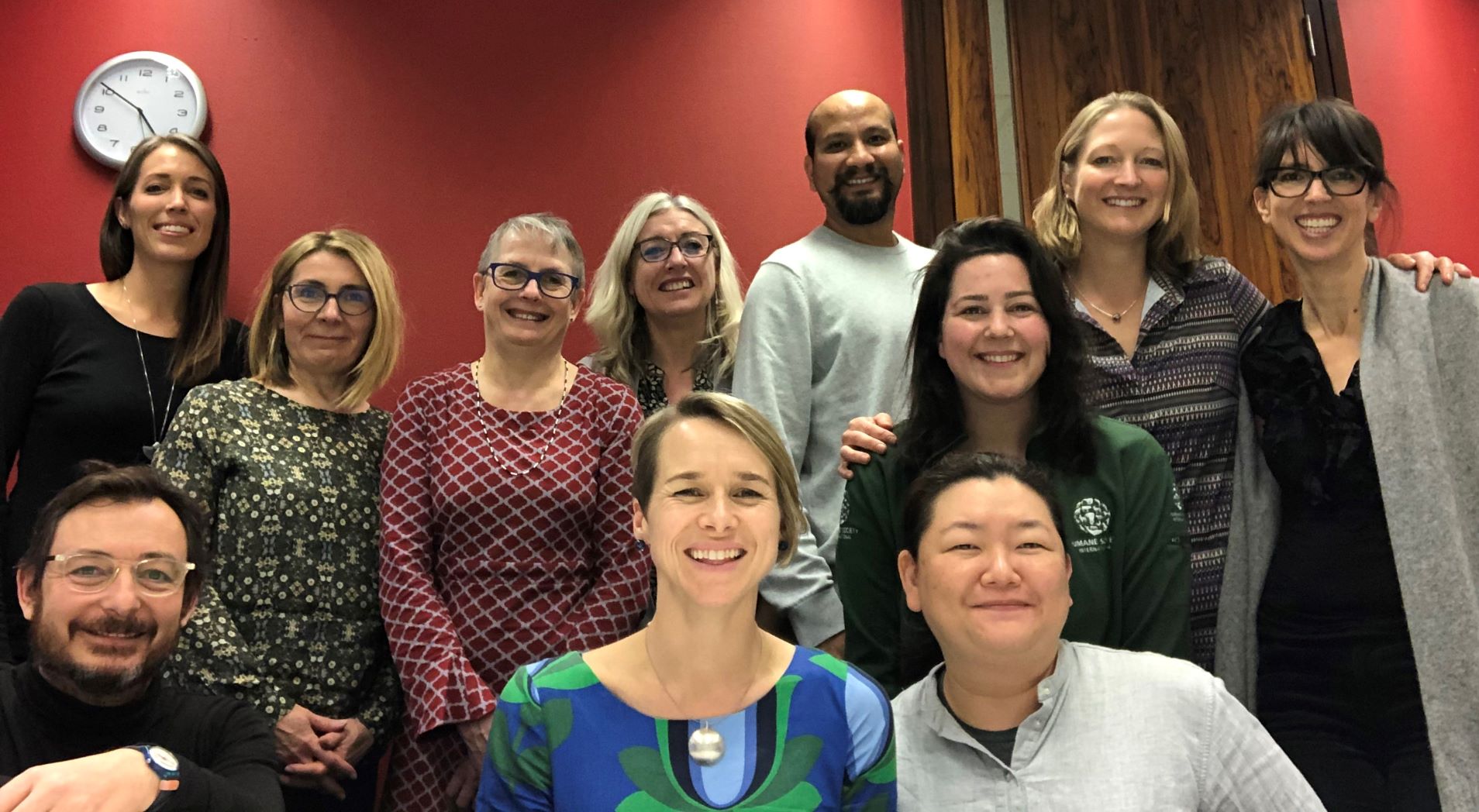
On August 10th of 2006, the International Companion Animal Management (ICAM) coalition was born when representatives from then WSPA (now World Animal Protection), HSI, IFAW, RSPCA International and WSAVA/GARC gathered to discuss their perspectives on Catch, Neuter and Return (CNR) for dogs and cats. The desire to establish a common position and terminology in cat and dog population management led to what we can now confidently call an historic agreement. ICAM was founded to provide thought leadership in this challenging field, and to support our NGO, IGO and Government audiences to understand the tools and strategies associated with companion animal management more clearly.
Since then, ICAM has been a driving force around the world in developing best practice for humane companion animal management in resource-limited scenarios. The evidence-based guidance and tools ICAM has developed are effectively shaping companion animal management implementation around the world – whether it be NGO- or government-led.
We are particularly proud of the 2019 edition of the ‘Humane Dog Population Management Guidance’. This groundbreaking resource describes how to design an evidence-based and root-cause focused dog population management intervention and so guides any interested stakeholders to implement an effective DPM program; its companion, ‘Are we making a difference?’, offers practical guidance for developing monitoring and evaluation tailored to each intervention. Three international dog population management conferences (2012, 2015 and 2019) have been overwhelming successes. The most recent conference in Mombasa, Kenya in 2019 had over 185 delegates representing 38 countries – majority from African and Asian countries where urgency for dog population management is greater than anywhere else, not least due to its importance in controlling of dog-mediated rabies.
With the welcome addition of new members including Four Paws International, International Cat Care and Dogs Trust Worldwide, the global credibility of the ICAM coalition has continued to grow. It is the only global platform of its kind that brings together diverse, international stakeholders sharing a common vision for harmonious co-existence between humans and companion animals.
The central ethos of ICAM is that collaboration will help us to accelerate our individual organizations’ efforts to create a better world for companion animals; and that together we will make a far greater impact than struggling through the challenges alone. As we enter the new decade, we will wholeheartedly continue to embrace this ethos. We will use the solid foundation of the last 14 years as a springboard to jump to new heights toward creating a better world for companion animals in coming decade.
Together, with your support and engagement with us along this journey, we will continue to make a positive difference for companion animals.
Kate Nattrass Atema – outgoing Chair (2011-2020)
Pankaj KC – Chair (2020-ongoing)

